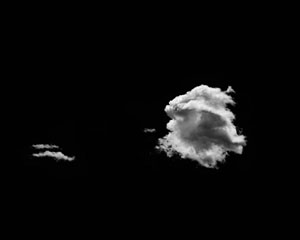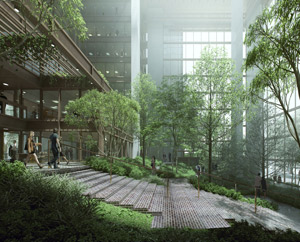11.13.24 — Counting the Seconds
You may find yourself counting the seconds at the Whitney, but why bother? Mark Armijo McKnight counts them off as no impatient human ever could. Who knows what that will leave a gay artist or the viewer when it is done? McKnight’s film makes his gender as hard to pin down as his landscapes, but everything counts—and I work this together with a recent report on a show at Wave Hill of queering nature as a longer review and my latest upload.
Dark clouds loom over a full wall, as ominous accompaniment. Will it ever end, and will the darkness? And then at last, after a totally black screen, the shot comes to rest on an otherworldly landscape and a metronome.  It is McKnight’s coming to be as a gay male and an American artist. It is also his “Decreation,” through January 5. He just happens to leave something temptingly incomplete along the way.
It is McKnight’s coming to be as a gay male and an American artist. It is also his “Decreation,” through January 5. He just happens to leave something temptingly incomplete along the way.
McKnight takes his title from Simone Weil, who began as an activist and ended as a mystic. As a mere child in a Jewish family, she spoke out against World War I. Through a lifetime of poor health, she stood up for trade unions and, like Gerda Taro and Robert Capa, the republican cause in the Spanish Civil War. In the end, though, she had a vision of the loss of self before a Christian god. It was as if her entire life had been shot out of the barrel of a gun, never to return. A photo from McKnight could well depict just that.
In reality, its puff of smoke belongs to clouds, wispy bright ones, as does a trail of smoke. It evokes Western skies in a great tradition of American art, of Ansel Adams in photography or paintings and drawings by Georgia O’Keeffe. A dreamer might say that it belongs, too, to the promise of an expanding nation—and an activist to its violence against Native Americans. McKnight could well identify with them all. The curators, Drew Sawyer with Nakai Falcón, surround the film with just half a dozen large photographs and two sculptures. They fall somewhere between a single installation, a premature retrospective, and the decreation of the artist’s dreams.
Titles speak of The Black Space, matter, sleep, and dreams, and McKnight writes of the “queer refusal of the disinterested gaze.” More than one photo shows naked bodies entwined and out of doors. They are all but indiscernible from strangely biomorphic hills—or an animal’s corpse in the dried grass and weeds. The photos stick to black and white, the film to sixteen millimeters, as if caught in an embodied world before the digital. Anti-Matter, also a photograph, looks all too material. Even the sculpture, concrete blocks with serious chips at their base, might be coming apart.
The film is in a tradition of lushness and austerity. It is going nowhere fast, like films by Michael Snow or the Empire State Building for Andy Warhol. The relentless ticking of a metronome recalls Minimalism in music and the refusal to make music at all in John Cage. McKnight says that he drew on György Ligeti, the Hungarian-Austrian composer of “micropolyphony.” While the film closes in on just one metronome, one can hear many more through speakers high on the facing wall. He swears that one could see them all if only the camera drew back.
Things happen when they happen and no more. The ticking continues, loudly, and comes to an end as abruptly as it began. Circles, incised in concrete and crossed by diagonals, could each belong to a clock face lacking numbers. Like the film, they gesture to passing moments but refuse to tell time. I cannot swear what “Decreation” has to say about mysticism, gender, the environment, or the United States. Still, it speaks loudly, and McKnight can claim the lushness and austerity as his own.
Read more, now in a feature-length article on this site.

